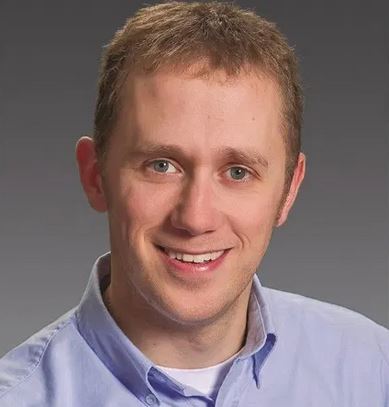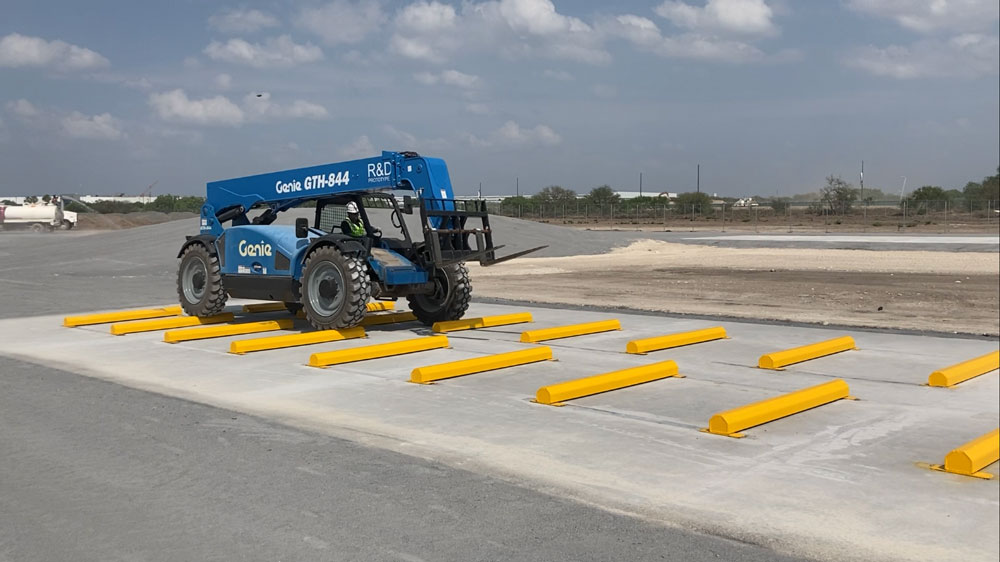Why Your New Genie Machine Has More than 10 Years of Life on It

by Chad Hislop - Sr. Director of Product Management On Aug 11, 2022, 01:00 AM
Subscribe To Aerial Pros
Filter by tags
When you’re shopping for a new piece of aerial equipment or a material handler, you probably have a long list of questions related to machine features, specs and cost.
But how often do you inquire about the research and development that went into that product? The testing it went through?
I'd argue that's just as important as knowing a boom lift's outreach, a telehandler's capacity or a scissor lift's working height. That's because knowing how and why a machine was developed and designed — and then how it was tested to ensure quality — is one of the best ways to feel confident about the promises being made on performance, durability and value.
Developing new products and features
At Genie, Research and Development (R&D) is integrated into our production process. I mean that literally: every Genie plant worldwide includes an R&D facility. We don’t want engineers sitting at computers in their own little worlds. We want them on the floor interacting with the people who build the machines and in testing areas seeing how the product responds.
For new products, we undertake a multi-year program that includes extensive research, dozens of engineers, several prototypes and lots of testing. Quality is designed in from the moment a product is conceived, and we make sure it holds up through our testing protocols.
Our FE (fuel electric) technology is a good example. These hybrid machines, like the Z®-60 FE hybrid articulating boom lift, have an all-electric mode and the ability to operate on diesel fuel. We spent years on the R&D process and introduced them once we were certain we had machines that had the productivity, efficiency and battery life our customers expect, all while helping keep total cost of ownership low.
Some of the ways you see the payoff on the final product include a battery that lasts a full day on a single charge and can charge while in hybrid mode, a smaller electric engine that provides similar torque to a diesel model, and four-wheel drive and 45% gradeability for superior terrainability.
We do the same when developing new options on an existing model. For instance, when incorporating a new engine to meet emissions regulations, we test emissions, of course, but also vibration, drive performance and all the components that interact with the engine, including software. This process can be as stringent as when we develop a new machine.
A lifetime of testing
Perhaps the centerpiece to these efforts is our “rapid part testing,” which allows us to put the equivalent of thousands of hours on a machine in a matter of days.
This includes track testing, in which we simulate different grades and ground conditions: up- and downhill, asphalt, dirt, rough terrain, potholes and even railroad ties. When Genie builds a new machine, we put it on a test track with two drivers all day every day, for three months. With the severity of the track and the obstacles we run the machine through, that time is the equivalent of 10 years of life on a machine.
The same is true if we want to test a jib, but it’s even faster. We have machines that can map the accelerations and G-forces seen on the test track and in the field, and simulate those loads on a shaker table in the lab. This lets us simulate 10 years of use in just a few weeks.
Other tests include cycle testing our lift structures for 40,000 cycles, scissors stacks for 100,000 cycles and motors and generators for up to 1 million cycles. When working with supply chain, we put components through this rigorous testing so that we are positive that what we put on Genie machines is going to perform as expected.
Our new GTH™-1056 telehandler shows how this testing comes to fruition. It underwent five times more track testing than is standard and extensive boom cycle testing under a variety of loads, along with all the other tests we perform on new machines. The result is a product with excellent durability and a lower TCO than previous models.
This testing is why you can be confident that when you buy a brand-new Genie boom lift, scissor or telehandler, it is built to last more than a decade.
Ultimately, what our rigorous R&D process does is allow us to build something, test it, break it and iterate on the design. And, because we are able to do this in a relatively short period of time, we can do it again. And again. Until we're satisfied that the machine or component meets our rigorous quality standards. Because, if it isn't clear yet, the Genie team isn't satisfied until we're sure we're able to deliver the quality our customers and end users need — every time.
What this means for you
The obvious benefit for you, our customer, is that you know you're getting a machine that has been extensively tested to ensure not only jobsite performance, but reliability as well. I don’t have to tell you how much lost revenue from downtime costs you. So how much do you really save on a cheaper machine if it's sitting on the fence for two months?
Lost revenue doesn’t even take into account the cost of repairs and maintenance. The cost to repair your machine and your reputation among the customers who dealt with the downtime is on top of this. If a manufacturer is cutting corners on R&D, it’s the customers who almost always end up paying for it.
In the market for a new boom lift, scissor lift or telehandler? If you’re a rental business, contact us. If you’re an equipment user, find your local Genie dealer.


